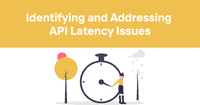API Monitoring Implementation: From Setup to Advanced Analytics
Your API just went down. Your phone starts buzzing with angry customer support tickets, and your revenue is bleeding by the minute. Sound familiar? If you've ever been in this situation, you know exactly why API monitoring isn't just nice to have---it's absolutely essential.
Most developers think API monitoring means checking if an endpoint returns a 200 status code. That's like checking if your car starts without caring whether the brakes work. Real API monitoring digs deeper into functionality, performance, and reliability to catch problems before your customers even notice them.
The reality is brutal: when APIs fail, everything fails. Your mobile app crashes, your website breaks, and your integrations stop working. One broken endpoint can bring down your entire platform. That's why companies serious about uptime use comprehensive monitoring solutions like Odown to stay ahead of these disasters.
This guide covers everything from basic endpoint testing to advanced automation strategies. By the end, you'll know how to build monitoring that actually protects your business instead of just telling you when things are already broken.
API Monitoring Fundamentals: REST, GraphQL, and SOAP Endpoint Testing
Let's start with the basics, but not the obvious ones. Anyone can ping an endpoint and check for a response. The real challenge is monitoring APIs the way your users actually use them.
REST API Monitoring That Actually Works
REST APIs seem simple until you start monitoring them properly. Here's what most people get wrong:
Status codes only tell part of the story. Sure, a 500 error is bad, but what about a 200 response that returns completely wrong data? Your monitoring needs to validate the actual content, not just the HTTP status.
Response times vary wildly depending on the request. A GET request for user data should be fast, but a POST request that processes a large file upload will naturally take longer. Your monitoring should account for these differences instead of using blanket thresholds.
Headers matter more than you think. Cache headers, rate limit information, and security headers all provide crucial insights into API health and performance.
Here's a practical example: instead of just checking if your user authentication endpoint returns 200, validate that it actually returns a properly formatted JWT token with the expected claims and expiration time.
GraphQL Monitoring Challenges
GraphQL monitoring is trickier because everything goes through a single endpoint. The complexity lies in the queries themselves:
Query depth can kill your server. A malicious or poorly written query can request deeply nested data that consumes massive server resources. Monitor for queries that exceed reasonable depth limits.
Partial errors are normal in GraphQL. Unlike REST, a GraphQL response can contain both successful data and error messages. Your monitoring needs to parse both and determine if the errors are acceptable or problematic.
Resolver performance varies dramatically. Some fields resolve instantly from cached data, while others might trigger complex database queries or external API calls. Track resolver execution times to identify bottlenecks.
SOAP Services: Legacy but Not Dead
Many enterprise systems still run on SOAP, and monitoring these services requires different strategies:
XML validation is non-negotiable. SOAP relies heavily on XML schema validation, and malformed XML can cause cryptic failures that are hard to debug without proper monitoring.
Fault codes provide specific error information that HTTP status codes can't match. A SOAP fault might indicate a business logic error, authentication failure, or data validation issue.
Performance characteristics differ significantly from REST. SOAP services often process larger payloads and involve more complex operations, so your performance baselines need to account for these differences.
Advanced API Testing: Authentication, Rate Limiting, and Error Handling
Basic endpoint monitoring won't catch the subtle issues that cause real problems in production. Advanced testing scenarios reveal how your APIs behave under stress and edge cases.
Authentication Testing Beyond the Basics
Authentication failures cause some of the most frustrating user experiences. Your monitoring should test authentication flows the way real users experience them:
Token expiration testing verifies that your APIs handle expired tokens gracefully. Many systems work fine with fresh tokens but fail poorly when tokens expire during active user sessions.
Multi-factor authentication flows need end-to-end testing. It's not enough to test the token validation---you need to verify the entire authentication process works smoothly.
Permission testing ensures that authenticated users can only access resources they're authorized to see. This is especially important for multi-tenant applications where data isolation is critical.
Rate Limiting Reality Checks
Rate limiting protects your APIs, but it can also break legitimate user workflows if implemented poorly. Your monitoring should test rate limiting behavior:
Burst traffic patterns help you understand how your APIs handle sudden spikes in traffic. Real users don't spread their requests evenly---they come in waves.
Rate limit recovery testing verifies that users can resume normal operations once rate limits reset. Some implementations get stuck in a throttled state even after limits reset.
Different rate limits for different endpoints reflect real usage patterns. Your login endpoint might have stricter limits than your data retrieval endpoints.
Error Handling That Actually Helps Users
Good APIs fail gracefully and provide useful error information. Your monitoring should verify that error responses help rather than confuse users:
Error message quality matters as much as error codes. A 400 error with a vague message frustrates users, while specific validation errors help them fix their requests.
Retry guidance helps automated clients handle temporary failures. Your APIs should indicate whether requests are safe to retry and how long clients should wait.
Cascading failure prevention ensures that problems in one service don't bring down your entire API ecosystem.
API Performance Analytics: Response Time Trends and SLA Compliance
Raw monitoring data is useless without analysis. The goal isn't to collect metrics---it's to understand what those metrics tell you about your system's health and user experience.
Response Time Analysis That Reveals Real Problems
Average response times hide more problems than they reveal. Here's how to analyze performance data properly:
Percentile analysis shows you what most users actually experience. Your average response time might be 200ms, but if your 95th percentile is 2 seconds, many users are having a poor experience.
Time-based patterns reveal performance trends that averages miss. Response times might be fine during off-peak hours but degrade significantly during high-traffic periods.
Geographic performance differences help you understand how network latency affects user experience in different regions. Your API might be fast for users in the same region as your servers but slow for international users.
SLA Compliance Tracking That Actually Matters
SLAs mean nothing if you can't measure compliance accurately. Here's how to track SLA compliance in ways that reflect real user impact:
Availability calculations should exclude planned maintenance windows and differentiate between partial and complete outages. A brief blip in one endpoint shouldn't count the same as a total system failure.
Performance compliance tracking focuses on user-impacting metrics rather than technical metrics. Users care about how long their requests take, not your server CPU usage.
Error rate compliance distinguishes between different types of errors. A validation error caused by bad user input shouldn't count against your SLA the same way a server error does.
Performance Baseline Management
Understanding normal performance helps you identify when something's wrong before it becomes a crisis:
Seasonal patterns help you differentiate between expected load increases and actual problems. Your e-commerce API might normally slow down during holiday shopping seasons.
Load correlation analysis helps you understand the relationship between traffic volume and performance. This information is crucial for capacity planning and scaling decisions.
Performance regression detection catches gradual degradation that might not trigger immediate alerts but could indicate underlying problems.
API Monitoring Automation: CI/CD Integration and Continuous Testing
Manual monitoring doesn't scale with modern development practices. Automation ensures your monitoring keeps up with rapid deployment cycles and catches issues before they reach production.
CI/CD Integration That Prevents Disasters
Your deployment pipeline should include comprehensive API testing that mirrors your production monitoring:
Pre-deployment validation catches breaking changes before they go live. Run the same tests you use in production against your staging environment to verify everything works correctly.
Post-deployment verification ensures that deployments actually succeeded. Just because your deployment script completed doesn't mean your APIs are working properly.
Rollback automation triggers automatically when post-deployment tests fail. Speed matters when something goes wrong in production.
Continuous Monitoring Automation
Automated monitoring adapts to changing conditions and reduces the manual work required to maintain comprehensive coverage:
Dynamic endpoint discovery automatically detects new API endpoints as you deploy them. This prevents gaps in monitoring coverage when you add new features.
Intelligent alerting reduces noise by learning from historical patterns and adjusting alert thresholds based on normal variation in your metrics.
Self-healing monitoring automatically retries failed tests and adjusts monitoring frequency based on observed conditions.
Quality Gates and Automated Responses
Automated responses to monitoring results help maintain system quality without constant manual intervention:
Deployment gates prevent broken code from reaching production by blocking deployments when API tests fail.
Auto-scaling triggers use API performance metrics to automatically scale infrastructure when response times approach unacceptable levels.
Incident response automation creates support tickets, notifies relevant teams, and begins incident response procedures when monitoring detects serious issues.
Professional monitoring platforms provide the automation capabilities needed for modern API management. Error budget management strategies help you balance reliability improvements with development velocity.
Ready to implement bulletproof API monitoring for your applications? Use Odown and get the advanced monitoring capabilities your APIs need to maintain peak performance and prevent costly downtime.



